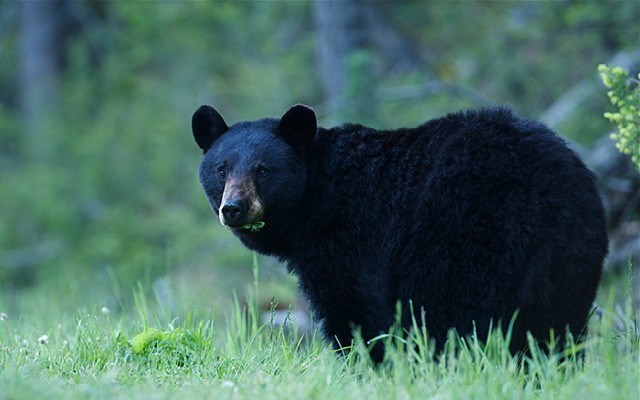Local officials are warning residents not to approach an aggressive black bear following an incident in which it swiped and injured a woman on Sunday evening.
Whistler RCMP and the Conservation Officer Service (COS) both responded to the bear attack in the Bayshores neighbourhood around 8:45 p.m. on April 1. A large male back bear with a yellow ear tag (meaning it has likely been involved in prior conflict) was accessing garbage on Cliff Top Lane, near Millar's Pond, when a female resident came out of her house and encountered the bear.
It charged, swatting and injuring her leg before she was able to get back into her house. While the laceration to her upper thigh was considered a minor injury, it required treatment and came as a result of the bear's claws.
"Obviously it's a troubling event for someone to be unexpectedly attacked by a black bear in their backyard," said COS Sgt. Simon Gravel.
In a release, RCMP explained they "observed some garbage around the scene and the victim advised that it appeared that the bear had been searching the garbage looking for food when she spooked it."
The officers were not able to capture the bear immediately following the incident. Several traps have since been set, while two COS officers will be staged in Whistler until further notice.
The attack follows several reports of the bear accessing non-natural food sources, like birdseed, near homes in the weeks beforehand, and bluff charging residents in an increasingly aggressive effort to protect those food sources when they'd attempt to chase the bear away.
Due to the bear's level of habituation and its food-conditioned, aggressive behaviour, it is considered a serious threat to public safety.
"We are now on the lookout for that specific bear that had repetitively, unfortunately, accessed food, but also learned that he can protect it by bluff charging people and perhaps causing injury. We're very concerned by that behaviour. We really wish that we can remove that risk in our community, because I think the likelihood that this bear repeats that behaviour is very high," Gravel said.
COS has been on patrol since the incident, ensuring no attractants are available to the bear. However, if anyone witnesses the bear accessing a non-natural food source, COS advise "to not approach the bear, keep their distance and call the RAPP (Report All Poachers and Polluters—1-877-952-7277) line immediately," Gravel explained.
Bylaw violations in the event of attractants being left unsecured can be reported to the municipality at 604-935-8280 during business hours. After hours, the RCMP can be reached at 604-932-3044.
Unfortunately for the bear, relocation is no longer an option. "This bear is food-conditioned, extremely habituated to humans and has caused human injury. That's above our threshold of tolerance for a black bear in our community in a residential area," Gravel said.
The unfortunate incident serves as a reminder for residents to keep all attractants secured as Whistler's bears continue to wake up from hibernation.
In addition to obvious attractants like food and garbage, residents should ensure barbecues are clean of grease while recycling, birdseed and pet food aren't stored outside.
"It should also not be stored close to the door, because bears can smell through doors," Gravel said. "If you do have attractants and garbage and dog food right next to your patio door that's unlocked, we've seen bears accessing it that way."




